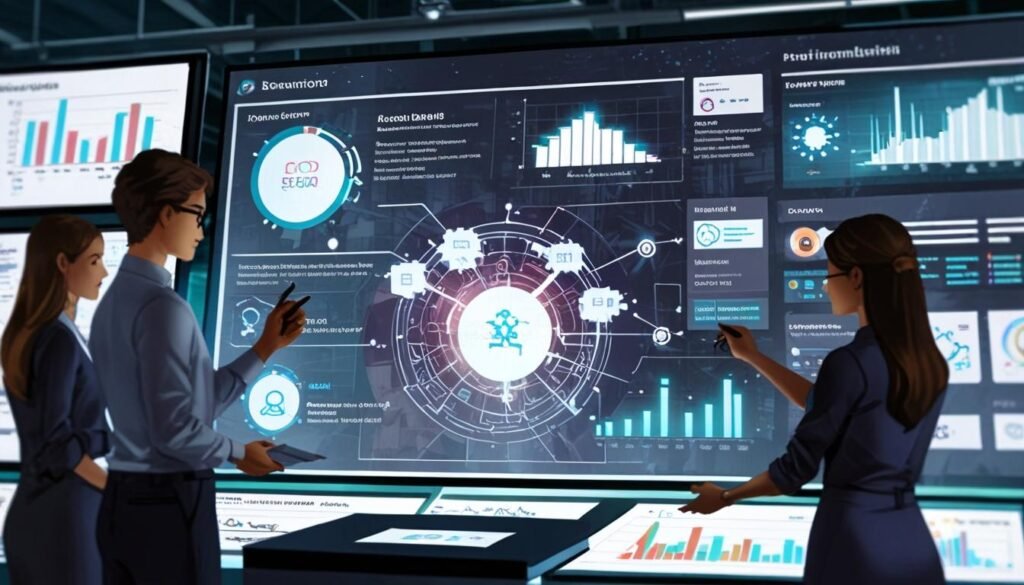**London**: Procurement teams are facing challenges in spending optimisation and supplier management. AI-driven solutions promise to enhance efficiency, mitigate risks, and overcome traditional hurdles, leading to significant shifts in procurement strategy and operational effectiveness, as highlighted in GEP’s 2025 Outlook Report.
Procurement teams across various sectors are experiencing significant challenges in optimising spending while effectively managing supplier relationships, addressing supply chain disruptions, and adhering to compliance requirements. Traditional procurement processes, which tend to be manual and isolated, are increasingly proving inadequate in meeting the fast-paced demands of modern business environments.
As organisations seek to enhance their competitiveness, many are turning to artificial intelligence (AI)-driven solutions to revolutionise the procurement function through heightened automation and intelligence. The adoption of AI technologies specifically designed for procurement can help Chief Information Officers (CIOs) guide their organisations in overcoming prevalent procurement challenges while maximising efficiency across the entire process.
One of the key issues identified within procurement teams is the struggle with poor data quality coupled with insufficient analytical capabilities, which hampers effective data-driven decision-making. Alex Zhong, global product marketing leader at GEP, highlighted this concern, stating, “Procurement is limited by siloed systems and isolated processes. They don’t have global visibility into their operations, and the data they do have isn’t real-time; it reflects what’s happened in the past.” Such limitations can lead to unregulated spending—often referred to as maverick spending—which complicates the enforcement of compliance and cost control. Furthermore, the inefficiencies associated with complex and convoluted workflows can result in delays and dissatisfaction among team members. Traditional approaches also hinder the ability to manage supplier relationships effectively.
To address these shortcomings, organisations are encouraged to invest in AI-centric solutions that provide the necessary visibility and intelligence for today’s procurement teams. Implementing these technologies can yield quantifiable cost savings while also mitigating risk and enhancing quality. According to Zhong, “Procurement isn’t just about finding the lowest price. It often involves complex, specialised purchases — like sourcing varying grades of steel from around the world. Navigating that requires intelligent decision-making around timing, quantity, and supplier selection.”
Leading procurement solutions are designed to achieve comprehensive orchestration while breaking down data silos, simplifying workflows, and enhancing visibility across processes. By harnessing AI tools tailored for procurement, teams can execute rapid, data-driven decisions in real-time, facilitating effective collaboration with both suppliers and internal stakeholders to unlock the full potential of procurement functions.
Zhong emphasised the interconnected nature of procurement within the supply chain, stating, “To unlock its full potential, procurement must be tightly aligned with both suppliers and downstream partners.” A robust procurement orchestration begins with a user-friendly, well-structured platform that smoothens the intake process. There are automation tools available that can significantly lessen manual tasks and quickly provide valuable insights that enhance decision-making, thus embedding efficiency throughout the procurement lifecycle.
An important factor previously hindering cooperation has been the lack of collaborative tools and visibility, an issue Zhong points out: “The problem in the past is that everyone worked in silos… With new AI capabilities — and new technologies like low-code — these platforms make collaboration a lot easier and faster.”
The benefits of total procurement orchestration can be transformative. For instance, one GEP customer realised a 20% reduction in lead time from order to shipment to receipt, a 40% acceleration in issue resolution time, and a 30% boost in order management and warehousing productivity. Zhong underscores the magnitude of this transformation, asserting, “This isn’t incremental change — it’s a paradigm shift and a complete revolution. Procurement leaders must shift their mindset to match the moment, or risk being left behind.”
As organisations navigate these evolving challenges, the findings and insights from GEP’s 2025 Outlook Report are poised to provide further guidance on optimising procurement strategies in this dynamic landscape.
Source: Noah Wire Services





